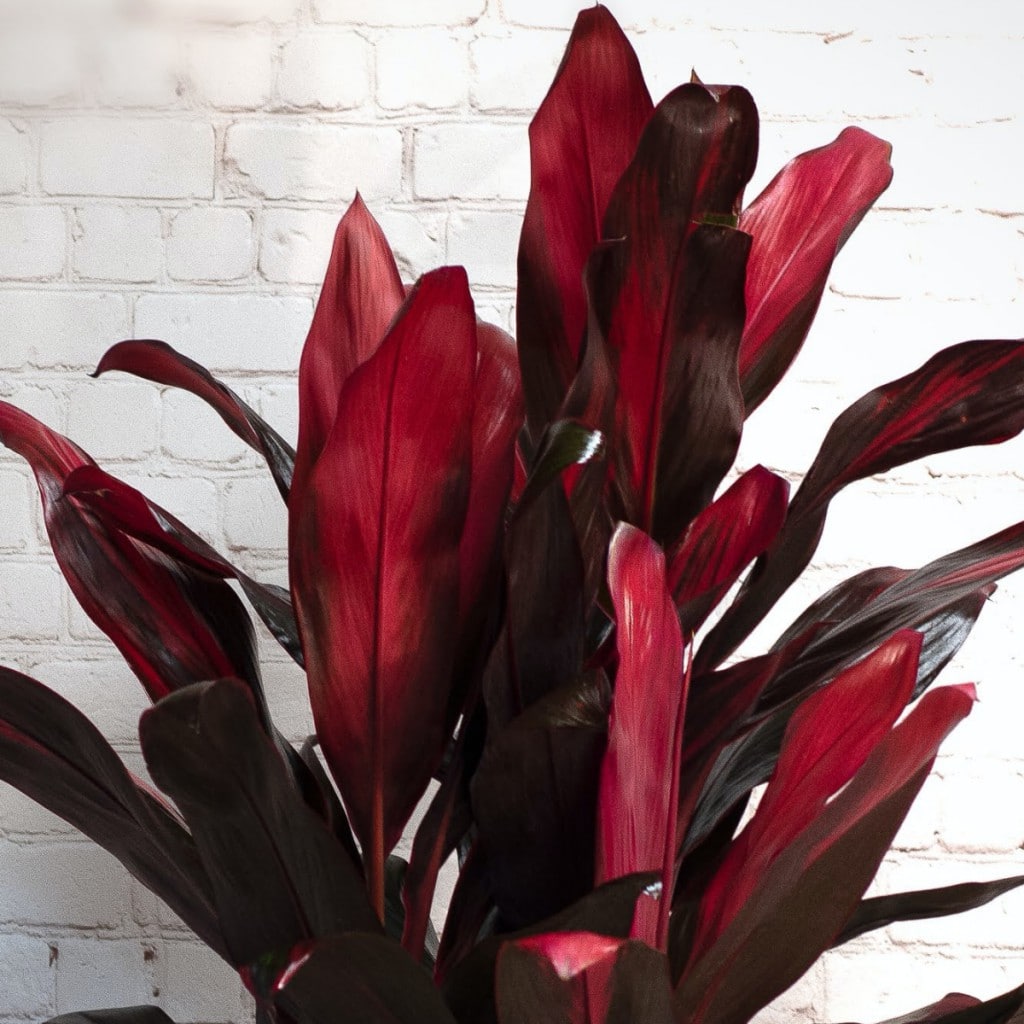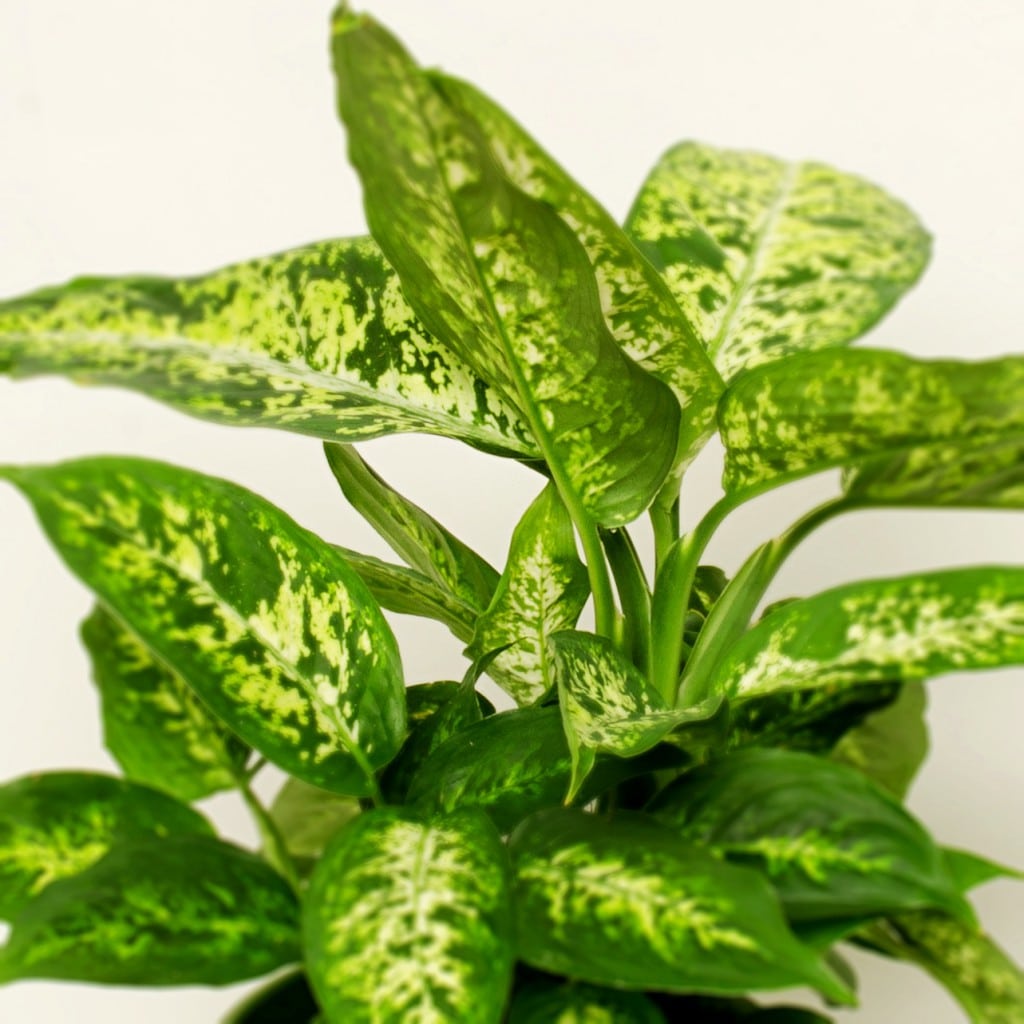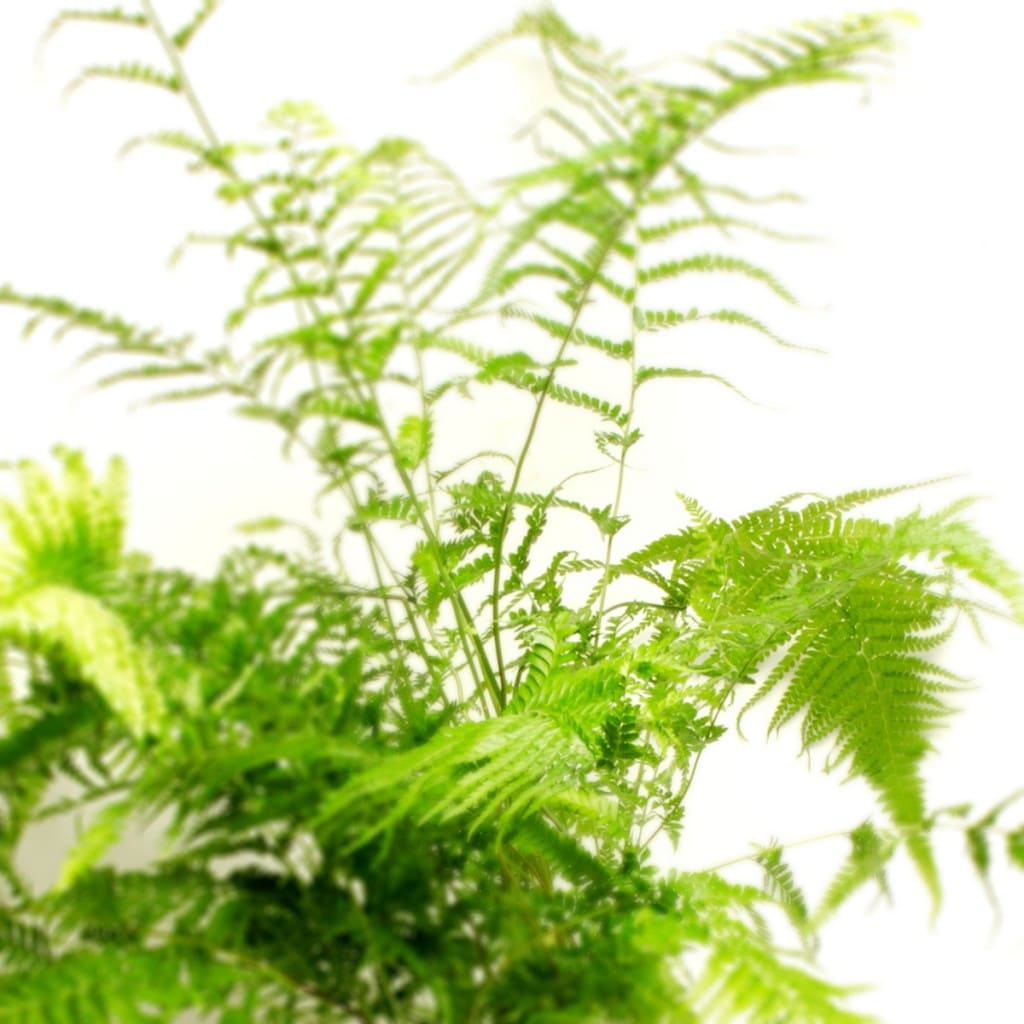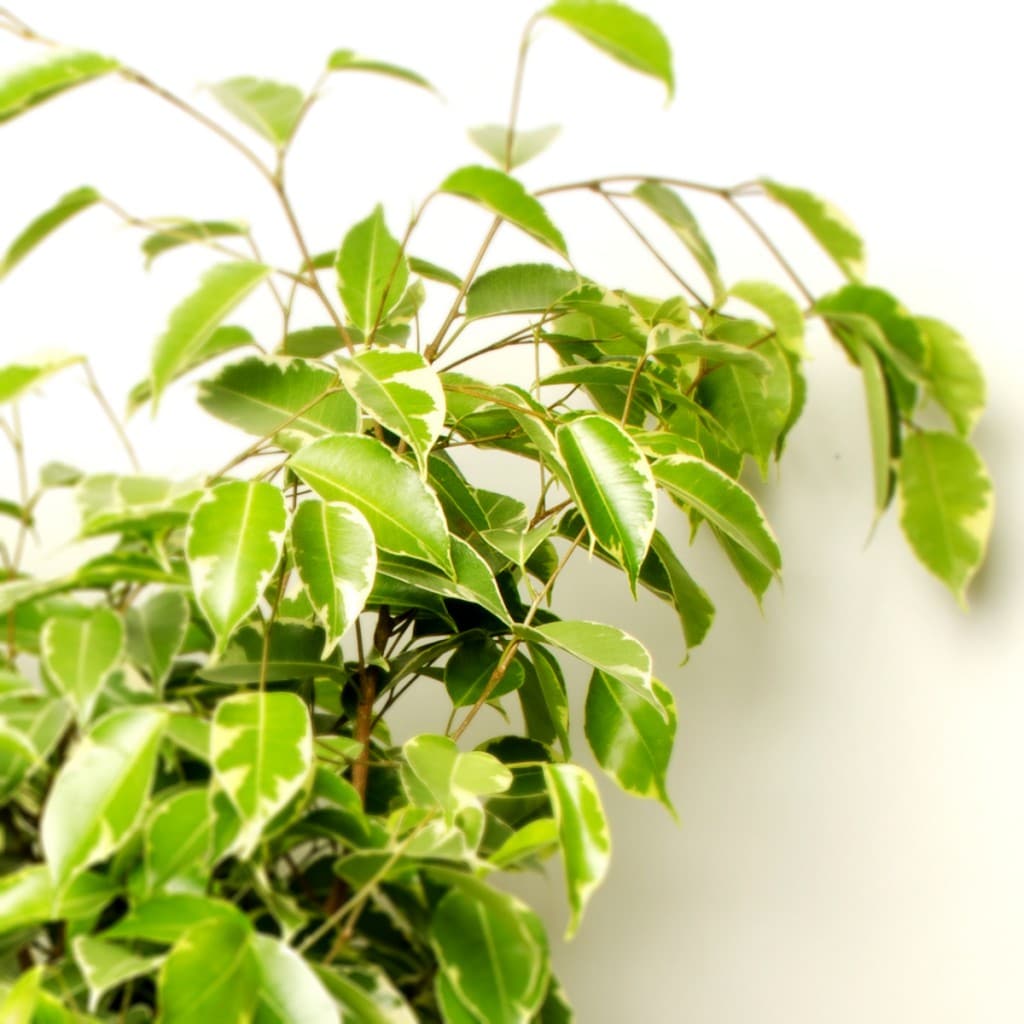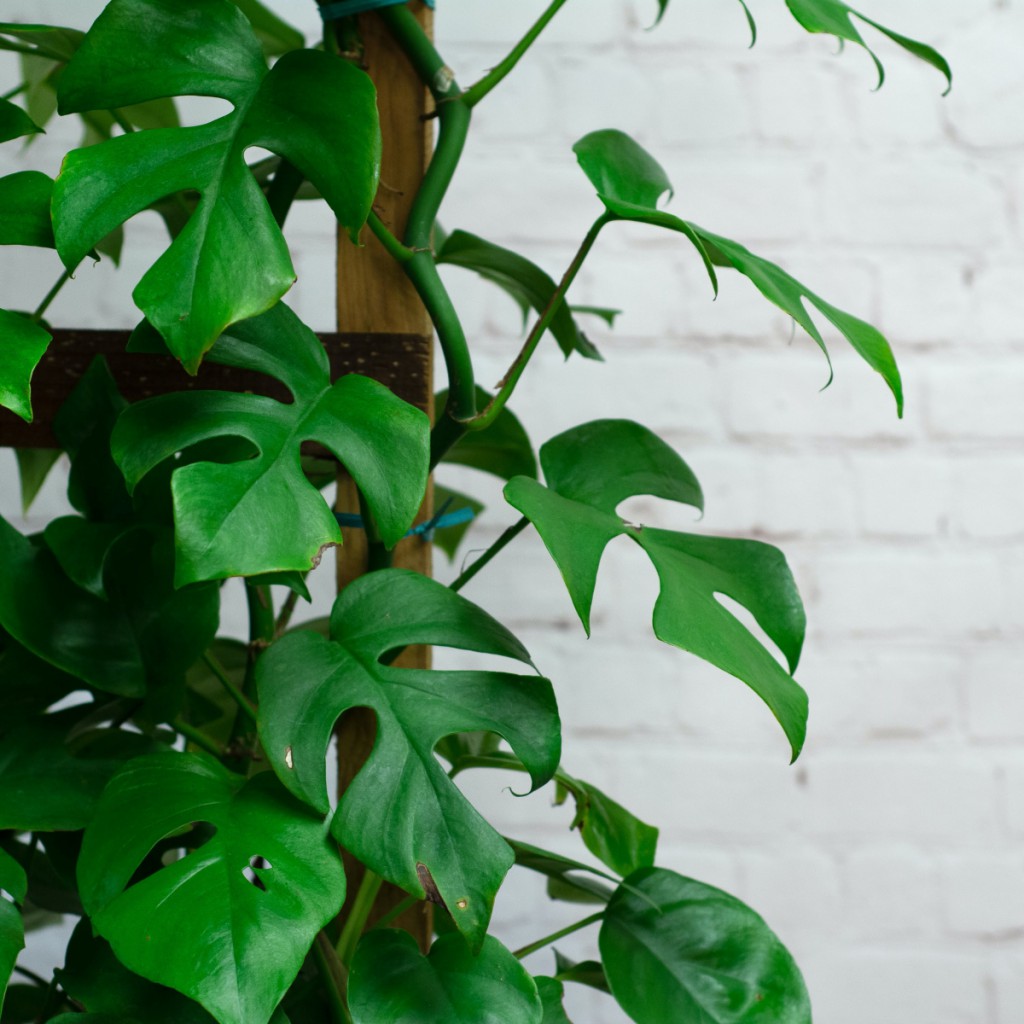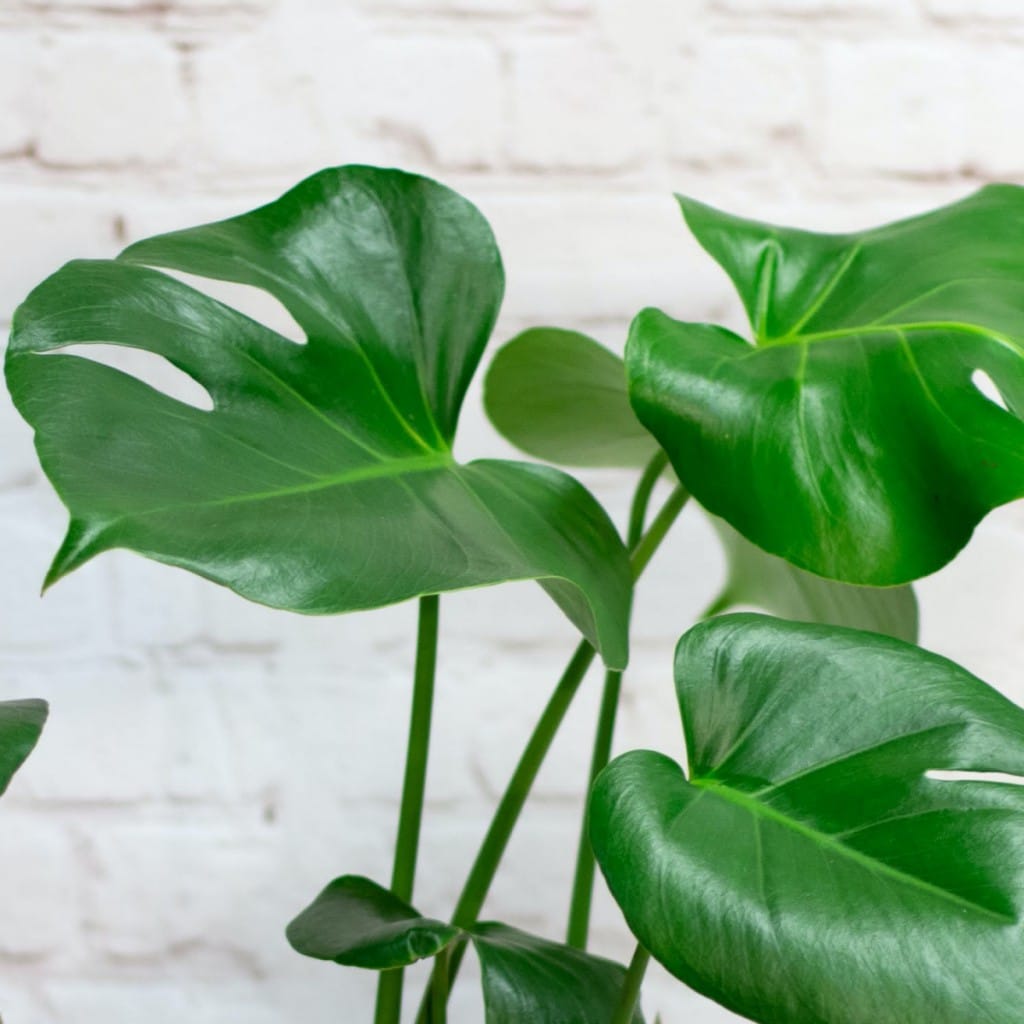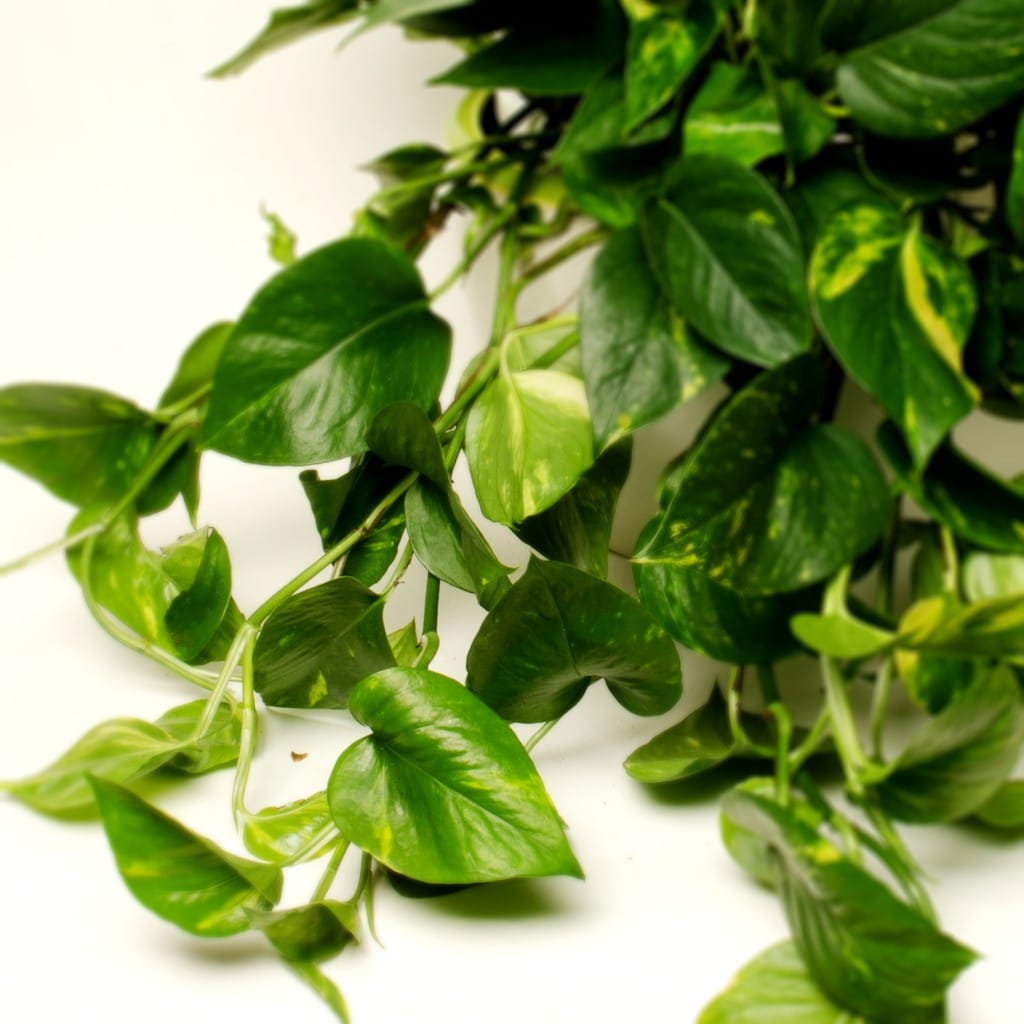African Violet Care
African violets will thrive in bright, warm and humid conditions. Remove dead flowers and leaves as soon as you see them to encourage a healthier plant. Light: Bright, but not direct sunlight. They are commonly grown under fluorescent lights placed 12 to 15 inches above the leaves. Water: African violet plants are picky about water, so take extra care of…
Agave Care
Light: Bright sunlight year-round. Consider moving your plants outside during the summer, where they can bask in full sunlight, and make sure they get plenty of winter light. Water: In spring, water with warm water just as the soil begins to dry out. Don’t let the soil become completely dry. In the winter and fall, when growth is suspended, water…
Aglaonema (Chinese Evergreen) Care
Light: Place in a location with medium to low light. Variegated varieties need only light shade. Water: Water regularly from spring to autumn allowing the top 1-2 inches of soil to dry slightly in between waterings. Do not let the plant sit in water. Water more sparingly in winter. Mist foliage frequently as this plant loves high humidity! Temperature:…
Alocasia Care
(African Mask, Elephant Ear) Light: African Mask needs a delicate balance of light, avoiding direct sunlight, as well as very dark and gloomy spots. Locations which fall between these two extremes are needed to keep your African Mask happy.. Water: African Mask must be kept moist at all times! It dislikes dryness at the roots, but too much water will…
Aloe Vera Care
Light: Aloes thrive in bright light conditions, but not direct sunlight. Leaves can turn brown with direct sunlight. Water: It is important to let the soil dry out in between waterings. Water your Aloe sparingly in the winter and In the summertime water deeply but infrequently. When in doubt water less than more. Temperature: Temperatures averaging around 21-26°C are very…
Anthurium Care
Light: Anthuriums as a rule will take as much light as you can provide them with, but not direct sunlight. Lower levels of light will slow down or cease flower production. Water: While Anthuriums are able to handle dryness around the root ball, they need to be watered thoroughly and allowed to dry just slightly before watering again. Drying out…
Aspidistra Care (Cast Iron Plant)
Light: A brightly lit room is good but not essential. They’re fine with low levels of light, but it’s best to keep them out of direct sunlight which will damage the leaves. Water: Water once the top one inch of soil becomes dry. Water less during winter and do not overwater. Over watering to the degree that the soil becomes…
Azalea Care
Azaleas are perennials you can grow indoors or outdoors. They bloom in the spring and summer outdoors, but indoor blooming times vary due to greenhouse propagation. Light: Place the Azalea in bright, but indirect sunlight when about to bloom. Keep it entirely in the shade, out of intense, indirect sunlight when not blooming. Water: Water the Azalea to keep the…
Bird of Paradise Care
Indoor Bird of paradise with the right care can produce flowers every 3-5 years. Light: Place your plant in a high light location with direct sun from autumn to spring, east-facing is ideal. Bright filtered light is best in the hot summer sun. It can tolerate indirect light but will flourish in a high light location. Water: In the spring…
Bromeliad and Pineapple Plant Care
Light: Bromeliads thrive in bright, sunny spaces. However, exposure to direct sunlight for an extended period of time can cause damage to the leaves. However, Pineapple and Earthstar varieties will flourish in full sun Water: Bromeliads are adapted to withstand drought but are much less tolerant of being over-watered, which can cause root rot. Many Bromeliads also have a tank…
Buddhist Pine(Podocarpus) Care
Light: A Podocarpus requires very bright indirect light, even some direct sunlight. They also do well in light shade, especially in the winter months when growth slows. Water: Well drained soil is essential, especially during the winter when they are susceptible to root rot. Keep the soil evenly moist but not soggy; allow the top two inches to dry out…
Cacti and Succulent Care
Light: Place cacti and succulents in the best possible light throughout the year, a south-facing window would be ideal. Continuous hot afternoon sun in summer months can cause discolouration or sun spots so limit direct afternoon sun if this occurs. Water: Water moderately from spring to autumn using rainwater or distilled water over tap water if possible. Let the soil…
Calla Lily Care
Light: Your Calla Lily prefers bright indirect light. Avoid prolonged exposure to direct sunlight, which can burn the leaves. If you aren’t sure you have enough light indoors, try using a grow light. Water: Water when 50% of the soil volume is dry. Water until liquid flows through the drainage hole at the bottom of the pot and discard…
Carnivorous Plant Care
(Sarracenia) Light: Carnivorous plants should be placed in good bright light with or without direct sun, but not direct summer sun during the hottest part of the day. Water: Water regularly from spring to autumn keeping the soil constantly wet, water more sparingly in the winter. Mist the leaves regularly and try to maintain a humid atmosphere around the plant. …
China Doll Plant Care
Light: This plant needs a lot of indirect, bright sunlight to thrive well. The plant should be placed in an area where it can get at least 4-5 hours of bright light each day. If you don’t have the proper lighting you can use a plant light to give the China Doll the required light. Water: China Doll Plants want…
Chinese Money Plant(Pilea Peperomioides)
Light: Chinese money plants will do best in a bright, indirect spot in your home and can even adapt to lower light as well. Light shade may encourage darker leaves and the plant will spread out more. The stem and leaves will eventually start to grow in the direction of the sun. To prevent the plant from becoming slanted, you…
Christmas Cactus Care (Zygocactus)
Light: While the Christmas Cactus can adapt to low light, more abundant blooms are produced on plants that have been exposed to a high indirect light. Water: When watering, thoroughly water the plant. Let the top 1” of soil dry out in between waterings. Do not let a Christmas Cactus completely dry out in between waterings. They also like humidity…
Citrus Care
Light: Set your citrus tree in full sun from a southern exposure. Trees need lots of light. If that’s not possible, supplement the light by installing 40-watt fluorescent shop lights above the plants. This is especially important in the winter, when they need 12 hours of light. Water: You’ll need to keep the soil evenly moist and since most interiors…
Coffee Plant Care
Light: Give a Coffee Plant the medium light of a somewhat shady window. A little direct sun is fine, but take care not to allow more than an hour per day of direct sun. Water: Keep soil thoroughly moist in spring and summer, barely moist in fall and winter and don’t forget to provide good drainage! Mist the Coffee Plant…
Cordyline Plant Care
Light: Bright indirect light, avoid exposing to direct sun. Cordyline australis species can tolerate some direct sun but avoid hot summer afternoon sun. Water: Water regularly when top soil is dry to touch during growing season spring to fall, sparingly in winter. Cordyline fruticosa requires higher humidity and should be misted regularly. Temperature: Cordyline thrive in temperatures above 16℃. Winter…
Croton Care
Light: Crotons need a very brightly lit location so that they keep their bright colors. They enjoy a western or southern window location, avoiding direct summer sun. If they have plenty of light, the leaves will have more variegation and the colors will be brighter. Water: Crotons need to have their soil evenly moist at all times; they tend to…
Curcuma
Commonly known as Siam Tulip Light: Place in a bright location with filtered light, avoiding direct sunlight as it can burn the leaves of the plant. Water: Keep the soil lightly moist during the growing season. Use a pot with a drainage hole to prevent soggy soil. Use a pebble tray or room humidifier to increase the moisture in the…
Cyclamen Plant Care
Light: Give cyclamen bright, indirect light in the fall and winter. While your plant is dormant during the late spring and summer, keep it in the shade. Water: Water whenever the soil feels dry during the growing season. High humidity, especially during the winter, is crucial. Keep the cyclamen on a tray of water with a layer of pebbles or…
Dieffenbachia
Light: Partial shade to bright indirect light with no direct sun in summer. Bright indirect light without direct sun in winter. Water: Water freely from spring to autumn letting the soil dry out slightly in between waterings. Water more sparingly in the winter. Temperature: The plant suffers if the temperatures get to low. Keep temperature no lower than 16℃ in…
Dracaena Care
Although there are many varieties of dracaena, they mostly require the same basic conditions to grow their best! Light: Dracaenas need moderate to bright indirect sunlight. Avoid direct sunlight as it can burn the tips of the leaves. The bottom leaves of dracaenas may droop or turn yellow and fall during the growing season however this is normal as dracaenas…
Dwarf Lemon Cypress
Light: Place in a location that receives a lot of light, an east-facing window is best. Lemon Cypress requires 6-8 hours of direct sun per day, they are not shade tolerant. Rotate the plant regularly so each side of the plant receives some sun. Water: Water regularly whenever the soil is dry, let the top 1 inch of soil dry…
Euphorbia
Some varieties include: Milii (Crown of Thorns), Coral Cactus (lactea grafted onto neriifolia) Light: Best possible light for all species of Euphorbia in winter. Succulent varieties can tolerate direct sun all year. Avoid direct summer sun for e. pulcherrima (poinsettia). Water: Water freely from spring to autumn allowing the soil to dry between waterings. Water sparingly in winter. Temperature: Euphorbia…
Fern Care
Light: Ferns do best with indirect lighting. A north-facing window is ideal although during the winter months, when the sun is low on the horizon, an east window is fine for these plants. Avoid south and west-facing windows, as the intense sunlight may scald the leaves or fronds of the ferns. Water: Consistent watering, keeping the soil evenly moist, not…
Ficus Care
Light: Tree and shrub type ficus require bright light but avoid direct sunlight in the summer while creeping and climbing ficus varieties prefer partial shade. It is recommended to turn the plant occasionally so all the growth does not occur on one side. Don’t worry too much if your tree drops some leaves when you first bring it home. Ficus…
Fiddle Leaf Fig (Ficus lyrata) Care
Light: Fiddle leaf figs require bright indirect light and can even tolerate some direct morning sun. Best placed in an east-facing window. Don’t worry too much if your tree drops some leaves when you first bring it home. Ficus often lose foliage when they’re moved to a new location and can take 2-3 weeks to become acclimated again. Water: Let…
Gardenia Care
Light: Gardenias prefer bright indirect light but not direct summer sun. Water: Gardenia’s do not like to dry out so keep their soil moist but not wet. Let the top inch of soil dry in between waterings. Gardenia need humidity and most homes are too dry for them to flourish. Keep them on a tray of water with a layer…
Haworthia Care
Light: Haworthia grow in similar conditions as other succulents and benefit most from bright light and can adapt to some direct sunlight. Avoid direct sunlight in hot summer months. White or yellow usually signify too much sun. Water: Water evenly and generously in the summer, letting the soil media dry out fully between waterings. In the winter, reduce watering to…
Hoya Plant Care
Hindu Rope (Carnosa), Wax plant (Australis), (Bella) Light: Bright light is required. Some direct sun is beneficial but avoid hot afternoon sun in summer months. Water: Water thoroughly Spring to Fall, allowing the soil to dry out slightly in between waterings. Don’t let the plant sit in water. Water more sparingly in winter months. Mist leaves regularly, but not…
Hydrangea Plant Care
Light: Place your potted hydrangeas in areas that receive morning sunlight and afternoon shade, for best growth. Water: Water potted hydrangeas regularly, as these plants require consistent water for proper flower growth and fare poorly during drought. Water the plant often enough that roots remain moist without maintaining wet soil, which may lead to disease problems. Water when the top…
Ivy Care
Light: Ivies prefer bright natural light but do not locate in a window with direct afternoon sun. Water: Water when the soil feels dry on the surface. Give the plant enough water to saturate the entire root system and drain out the bottom. Do not leave them sitting in water. Mist leaves occasionally, regularly in the summer months. Temperature: Ivies…
Jade Care
Light: An important aspect of the care and maintenance of Jade Plants is how much sun they receive. They need full sun in order to grow properly. If they do not have full sun, they may become stunted and leggy. Water: Water your jade plant when the top of the soil has become dry to the touch. Reduce the watering…
Jasmine Care
Light: Jasmine prefers a bright light location and can even handle some direct sunlight. Water: Never let the dirt dry out, even during the winter when the plant is in bloom. Good drainage is important, too, so ideally, the soil should be slightly moist all year, but never saturated. Temperature: Normally Jasmine prefers temperatures between 5-15ºC during the night and…
Lipstick Plant Care
Aeschynanthus Light: These plants can handle medium to bright indirect light. Medium indirect light is enough to support the plant, but it is not always enough to encourage blooming. If you want to promote flowers, then this houseplant requires plenty of bright indirect light. If you place your Lipstick Plant outdoors in the warmer months, make sure to place…
Lucky Bamboo Care
Dracaena sanderiana Light: Lucky Bamboo prefers bright, filtered sunlight. Avoid direct sunlight as it will scorch the leaves. They are more tolerant of too little light than too much. If the bamboo leaves are fading to a light green colour, the plant is not getting enough light. Water: Using filtered, bottled or rainwater for your Lucky Bamboo plant keeps the…
Mandevilla Vine Care
Light: Bright light with some direct sunlight. Plants that don’t get enough light will grow tall and leggy, with few blooms. Water: Unlike many flowering plants, Mandevilla will tolerate some dryness and continue to flower. That said, they prefer a consistent level of moisture and you should try to keep the soil damp, not wet. When watering, make sure to…
Maranta Care
Calathea, Prayer plant, Ctenanthe Light: Maranta plants prefer bright indirect light. Too much direct sun burns the leaves and causes the beautiful leaf colours to fade. Water: Maranta are very sensitive to the water you use. The best way to water is to use distilled water, rain water, or allow your tap water to sit out overnight before using it.…
Ming Aralia Care
Polyscias Fruticosa Light: Ming Aralia prefer bright indirect light. Avoid exposing to direct sun. Water: Water thoroughly and allow top 2 in (5 cm) of soil to dry out between waterings. Water more sparingly in winter months. Temperature: Average room temperatures 65-85°F/18-29°C. It can take warmer temperatures but don’t expose it to anything below 60°. Fertilizer: Feed monthly spring through…
Money Tree Care
Pachira Aquatica Light: Money Tree plants prefer a medium amount of light and do very well in indirect sunlight and even partial shade. Water: Water when the top 2-3 inches of the soil is dry, keeping the deeper soil moist, but not wet. The Money Tree may need more water in hot environments or when indoor air is dry. A…
Monstera Ginny
Rhaphidophora Tetrasperma R. tetrasperma has a striking resemblance to Monstera deliciosa and is often mistaken for the Philodendron species. However, this plant is neither a Monstera or a Philodendron, although they are all in the same family Araceae. Rhaphidophora tetrasperma is a completely separate genus than those two plants. Light: Place plants in a location with bright to moderate indirect…
Monstera Plant Care
Deliciosa, Swiss cheese vine Light: Place Monstera plants in a location with bright to moderate indirect light. Avoid direct sun. Water: Water regularly, keeping the soil moist, but not soggy from spring to autumn. During winter let the top of the soil dry just slightly between waterings. Yellowing leaves may indicate overwatering, or poor drainage. Mist leaves regularly if room…
Myrtle Care
Myrtus Communis Light: Myrtle prefer bright light with some direct sun. Avoid direct afternoon sun in the summer months. Water: Water regularly from spring to fall, more sparingly in the winter. Soil should be kept moist but not wet. Mist the leaves frequently. Temperature: Myrtle prefers a dormant period during winter, when it should be kept in a light, cool…
Natal Mahogany Plant Care
Trichila dregeana Light: Bright indirect light is best for the Natal Mahogany. Can tolerate lower of levels of light but may cause the plant to become leggy. Water: These plants thrive on water and are very forgiving when you over-water, soil should be kept moist but not wet. Check this plants moisture at least once a week. Temperature: This plant…
Nephthytis Care
Nephthytis Care Common names for Nephthytis is Arrowhead P_lant, Elephant Ear Plant, Butterfly Plant and Goosefoot Plant. They are popular houseplants and need to be kept away from any pets, as they are poisonous. Wear gloves to prevent the Nephthytis sap from irritating your skin, if you have sensitive skin. They are popular for their arrow-shaped, variegated leaves, these perennial…
Norfolk Pine Care
Light: Place Norfolk Pine in a bright location, avoiding direct sun in the summer. They can also tolerate semi-shade. Water: Water regularly from spring to autumn keeping the soil moist but never wet. Water more sparingly in winter. Mist leaves occasionally. Temperature: Grow at temperatures between 10-35°C. Fertilizer: Fertilize during growing phases. In the spring, summer, and early fall, feed…
Oleander Care
Nerium Light: Oleander plants prefer bright light with at least four hours of direct sun each day. The plant can be placed outdoors in the summer. Acclimatize it gradually and bring inside the home before the nights become cold. Water: Water generously throughout the growing season, keeping the soil evenly moist. Water sparingly in winter when plant is resting. Temperature:…
Oxalis Care
Oxalis/Shamrock Light: Bright indirect light is best for Oxalis plants, they are not well suited to low light conditions. Water: Water every 1-2 weeks, allowing soil to dry out halfway down between waterings. Expect to water more often in brighter light and less often in lower light. Temperature: 65°F-85°F (18°C-30°C). It’s best not to let it go below 60°F…
Palm Care
Although there are many varieties of palms, they all require similar conditions to grow their best! Light: A fairly bright room without direct sunlight is advised. Too much sun can cause scorched leaves. Parlour and Kentia palms can thrive in lower light conditions. Water: All palms require good drainage. Water more liberally in spring and summer allowing the top 1…
Peace Lily Care
Spathiphyllum Light: Place peace lily in a location with bright indirect light in the winter and a semi-shaded location in the summer. Avoid direct sunlight. Water: Water regularly to keep soil moist, let the top of the soil dry slightly in between waterings. Water more sparingly in winter. Mist leaves regularly. Peace lily plants are very forgiving, If you find…
Peperomia
Light: Peperomia plants grow well in bright indirect light or semi-shade. These plants even grow under fluorescent lights. Keep away from direct sunlight. Water: Water moderately spring to autumn, allow the top half of the soil to dry out in between waterings. Water cautiously in the winter. Over-watering, resulting in root-rot, is the main cause of serious peperomia plant…
Philodendron Plant Care
There are many different kinds of philodendrons including upright and hanging varieties but all take the same basic care. Light: Place in a bright location with indirect light avoiding direct sunlight. Philodendron scandens (heartleaf philodendron) can tolerate low levels well. Water: Keep soil moist at all times but don’t let the plant sit in water. Water more sparingly in winter…
Pilea Care
Aluminum plant Light: Pilea plants grow well in bright indirect light or semi-shade. Avoid direct summer sun. Water: Water moderately spring to autumn, allow the top ¼ inch of soil to dry out between waterings. Water sparingly in winter. These plants like high humidity so mist the leaves regularly. Fertilizer: Feed regularly from spring to autumn with a…
Poinsettia Care
Light: Place your poinsettia plant near a sunny window where it will have the most available sunlight. A window that faces south, east or west is better than one facing north. Keep the plant away from cold window panes as they are sensitive to cold. Water: Water regularly and thoroughly. Wait until soil is moderately dry in between waterings. Water…
Pothos Care
Scindapsus Light: Pothos is a very versatile plant that can tolerate the lower light levels or bright filtered light of a home. The yellow variegations of the plant become more pronounced when exposed to greater amounts of light. Avoid direct sunlight Water: Let soil dry out slightly in between waterings. Watering more liberally in spring to autumn and sparingly in…
Rose Care
Rosa, Miniature Rose Light: Place rose plant where it will receive the most light – a sunny window sill is ideal and east-facing is best. It also benefits from being placed outside on a balcony or in the garden. They can either be brought in when in bloom to enjoy the flowers or left outside. Pots kept on a balcony…
Sago Palm Care
Cycas revoluta Light: Sago Palms prefers bright indirect light to direct sunlight. Choose a south- or west-facing window. Water: Let the soil surface dry out in between waterings. Water thoroughly, allowing it to soak into the soil until it drips out of the drainage hole. Remove excess water that collects in the saucer. Sago palms are sensitive to overwatering and…
Schefflera Care
Light: Schefflera plants flourish in areas with a lot of light. Care for scheffleras by placing them in rooms with bright filtered or indirect light. The foliage of your Schefflera arboricola plants will turn yellow and drop if there is insufficient light. Water: Water Schefflera liberally spring through fall, allowing the soil to dry out slightly in between waterings. Water…
Snake Plant Care
Sansevieria Light: Snake plants prefer bright, indirect light and can even adapt to direct sun and also a degree of shade. Water: Water moderately letting the soil dry between waterings from spring to autumn. During winter water very sparingly, about once or twice a month. The biggest danger with Snake Plants is over watering, especially in the winter months. Temperature:…
Spider Plant Care
Chlorophytum Light: Spider Plants are very undemanding. Spider Plants prefer bright, indirect light. However, they will grow in conditions ranging from semi-shade to partial direct sun. Water: Water liberally through spring to autumn letting soil dry out slightly in between waterings. Mist leaves occasionally in the summer. During the winter water sparingly. Temperature: Do not let the temperatures fall below…
Staghorn Fern
Light: Bright indirect light, avoiding direct hot summer sun. Staghorn ferns do not tolerate low-light conditions. Water: Let soil dry out slightly between waterings. The fern also absorbs moisture through its fronds so misting regularly is recommended. If the fern is mounted on a plank or surface, soak the plant for 1 minute and let drip dry before re-hanging. Temperature:…
Succulent Senecio
String of Pearls – Beans – Dolphins Light: Senecio plants prefer full sun but can adapt to medium light as well. A south-facing window is preferred. In winter, give the plants the brightest, sunniest location you can find. Temperature: String of Pearls succulent should be kept at an average indoor temperature of 70° – 80° degrees Fahrenheit. During winter,…
Tacca Bat Flower Care
Light: The Tacca Bat plant should be placed in a bright location, avoiding direct sun. Most have had better success with locations that have plenty of good air circulation. Water: Keep the Tacca Bat Flowers soil consistently moist but not soggy.. This plant requires a 50-70% humid climate to survive; mist regularly. Temperature: A steady temperature of 18-21°C year-round is…
Tillandsia Care
Air plant Light: Place tillandsia in a bright location avoiding direct afternoon sun in summer months. Air plants are also quite tolerant in lower levels of light. Water: You can either soak your Tillandsia in room temperature water once per week for 15 minutes or provide a heavy misting 3-4 times per week Do not keep plants constantly wet…
Tradescantia Care
Zebrina (wandering jew, inch plant), Setcreasea (purple heart), Siderasis (spiderwort) Light: Place plant in a bright location with some direct sun autumn to spring, avoid direct sun in the summer. Grow Siderasis (spiderwort) variety in semi-shade. Water: Water regularly spring to autumn allowing the top 2 or 3 inches of soil to dry out slightly between waterings. Water more sparingly…
Tropical Plants – Basic Care
There are thousands of species of tropical plants but most require similar care. Light: Bright indirect light to partial shade is ideal for the majority of tropical house plants. Avoid exposure to direct sun, especially during the summer months. Water: Water regularly from spring to autumn allowing the top soil to dry slightly in between waterings. Water more sparingly during…
Turtle Vine Care
Callisia Repens Light: Turtle Vine likes bright, indirect light and you should avoid direct sun, especially in the summer. A North or East facing windowsill is ideal. Water: Water when the top one to two inches of soil is dry; about once every two weeks in the summer and once every three weeks in the winter Temperature: Prefers temperatures between…
Vine Care
Cissus (tapestry vine), Rhoicissus (grape ivy), Tetrastigma Light: Place your vine in a brightly lit location away from direct sunlight. Grape Ivy and Tapestry vines can tolerate partial shade. Water: Water thoroughly from spring to autumn letting the top 1-2 inches of soil dry out in between waterings. Do not let the soil dry out completely. Water more sparingly in…
Yucca Care
Light: Requires bright, full of filtered sunlight, acclimate slowly to full, direct sunlight. Yuccas thrive in full sunlight so they’re perfect for that west-facing window. Water: Allow soil to dry completely between waterings, the top 1/3 of soil should dry out before watering. Do not let the plant stand in excess water. Yucca are highly sensitive to becoming waterlogged. Temperature:…
Zamioculcas Care
ZZ plant Light: Place your ZZ plant in a moderate to bright location avoiding direct afternoon sun in summer. They are also quite tolerant of low levels of light. Water: The Zamioculcas plant is much like a cactus when it comes to watering. They are drought-tolerant plants so it is best to let the top 2-3 inches of soil to…
Zebra Plant Care
Aphelandra Light: Place in a location with bright indirect light, avoiding direct sunlight. Water: It’s important to keep the soil moist to the touch, and not waterlogged or too dry. It’s advisable to use luke warm soft water (not hard water). Reduce watering slightly in winter. Temperature/Humidity: Temperatures from 60-75 ºF (15-23 ºC) are ideal and no lower than 55…
- African Violet Care
- Agave Care
- Aglaonema (Chinese Evergreen) Care
- Alocasia Care
- Aloe Vera Care
- Anthurium Care
- Aspidistra Care (Cast Iron Plant)
- Azalea Care
- Bird of Paradise Care
- Bromeliad and Pineapple Plant Care
- Buddhist Pine(Podocarpus) Care
- Cacti and Succulent Care
- Calla Lily Care
- Carnivorous Plant Care
- China Doll Plant Care
- Chinese Money Plant(Pilea Peperomioides)
- Christmas Cactus Care (Zygocactus)
- Citrus Care
- Coffee Plant Care
- Cordyline Plant Care
- Croton Care
- Curcuma
- Cyclamen Plant Care
- Dieffenbachia
- Dracaena Care
- Dwarf Lemon Cypress
- Euphorbia
- Fern Care
- Ficus Care
- Fiddle Leaf Fig (Ficus lyrata) Care
- Gardenia Care
- Haworthia Care
- Hoya Plant Care
- Hydrangea Plant Care
- Ivy Care
- Jade Care
- Jasmine Care
- Lipstick Plant Care
- Lucky Bamboo Care
- Mandevilla Vine Care
- Maranta Care
- Ming Aralia Care
- Money Tree Care
- Monstera Plant Care
- Monstera Ginny
- Myrtle Care
- Natal Mahogany Plant Care
- Nephthytis Care
- Norfolk Pine Care
- Oleander Care
- Oxalis Care
- Palm Care
- Peace Lily Care
- Peperomia
- Philodendron Plant Care
- Pilea Care
- Pilea Care
- Poinsettia Care
- Pothos Care
- Rose Care
- Schefflera Care
- Snake Plant Care
- Spider Plant Care
- Staghorn Fern
- Succulent Senecio
- Tacca Bat Flower Care
- Tillandsia Care
- Tradescantia Care
- Tropical Plants – Basic Care
- Turtle Vine Care
- Vine Care
- Yucca Care
- Zamioculcas Care
- Zebra Plant Care
- Dried Flower Care



